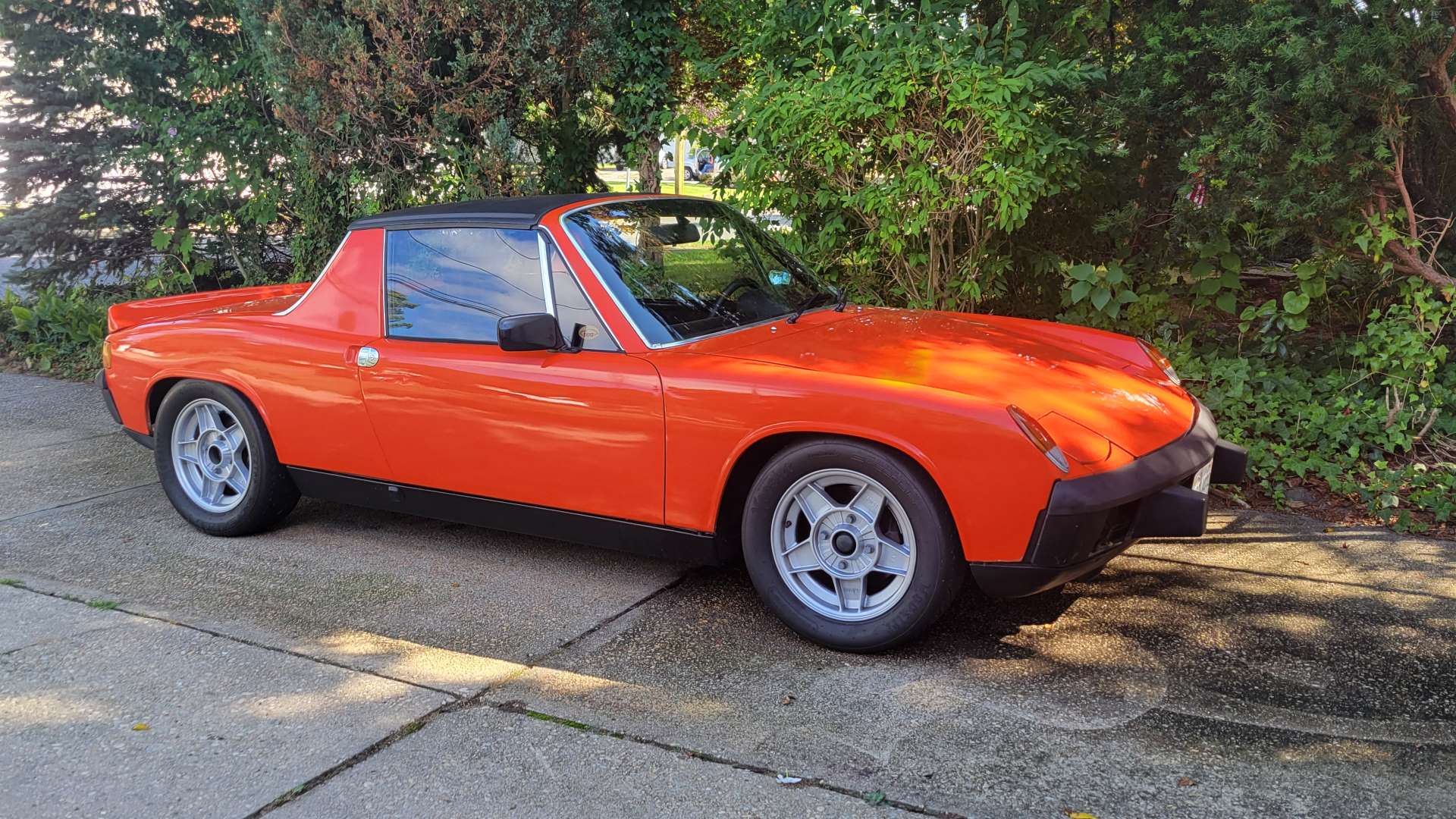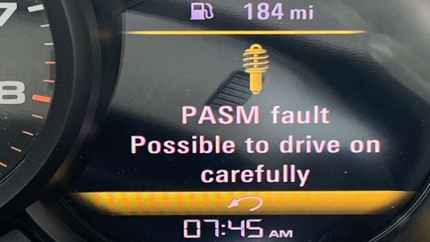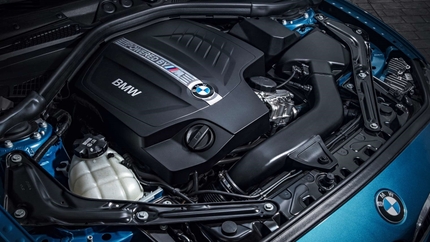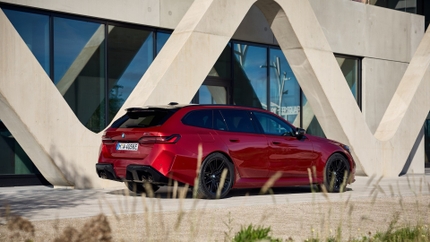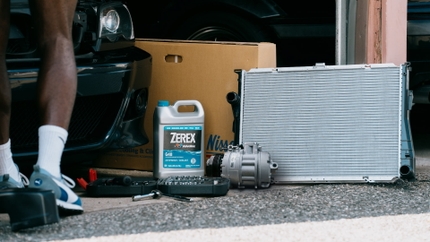- 05/04/2025
- 13 Min Read
- By: Christian Schaefer
European Automotive Acronyms & Initialisms: What They Are & What They Do
As cars have evolved, they've become filled with much more stuff. That counts for amenities like heated rear seats, entertainment screens, and larger systems that make them safe to drive and convenient to operate. Our technological advances have spawned more complex ways of building our vehicles, ultimately for the better, but it has meant a lot more to learn. Research any European vehicle, and you're bound to see abbreviated and initialized parts and systems that are critical to understanding what it might take to own that vehicle. Searching directly for them without knowing what to look for is a real challenge, and come back to this cheat sheet whenever you need it.
European Brands: |
Porsche

Porsche loves their initialisms. Every system has at least one, and though there are many to remember, they’re very straightforward. Each starts with “P,” which stands for Porsche. Every following letter refers to the system at hand. These initialisms often pop up on build sheets, for sale ads, and forums where owners discuss how different options affect their cars. Most of these apply to the entire range of Porsche products, though some technical details may differ between models.
PASM - Porsche Active Suspension Management
PASM is Porsche’s Active Suspension Management system, the name given to the company’s adjustable dampers. The system has been a commonly selected option since its introduction in the 997-generation 911 and has found its way into every model Porsche sells in one form or another. It’s based on Bilstein’s DampTronic technology but tuned with input from Porsche engineers to deliver a sporty ride and a comfortable one in one package.
Within PASM dampers (shock/struts) is a computer-controlled valve that alters the fluid flow within the damper body. The fluid flow determines how soft or firm the suspension rides, so the computer changes the valve’s position based on how it wants the suspension to ride and react. The system has gotten more advanced over the years and has had a sportier offshoot called Sport PASM for those looking for the most capable damper package.
PDCC - Porsche Dynamic Chassis Control
PDCC, or Porsche Dynamic Chassis Control, is Porsche’s active roll stabilization. In a 911, the system uses hydraulically-controlled swaybar endlinks and several sensors to read the vehicle’s body roll and reduce it. The more control of the body roll, the better the comfort and cornering performance. In the Cayenne, the PDCC system uses a sway bar with an electromechanical actuator in its center. Depending on the situation, a control unit commands the actuator to provide more or less roll control.
PDLS & PDLS+ - Porsche Dynamic Lighting System
PDLS stands for Porsche Dynamic Lighting System. Vehicles with them have main beams that turn with the steering wheel for better visibility around corners. The PDLS headlights are either Xenon or LED units, depending on the year and model. The Turbo and GTS-badged models are fitted with them as standard, while they’re optional on all others. PDLS+ could be fitted over the standard PDLS system for a bit more money. The Plus headlights on the newest generation of Porsches use an “LED Matrix” that regulates the intensity and direction of the main beam based on traffic surroundings for maximum visibility in all situations.
PCCB - Porsche Ceramic Composite Brakes
If you see yellow calipers on a Porsche, it probably wears Porsche Ceramic Composite Brakes. Porsche’s lightweight and high-performance brake system comes standard on Turbo S models and some GT cars. The brake rotors are made from a carbon fiber-reinforced ceramic core with an additional ceramic layer. Their carbon-ceramic construction allows them to withstand race track abuse for far longer than any steel disc while being half the weight of a conventional steel rotor. The only downside is cost—the PCCB option is typically around $8000 to spec, and the replacement rotors are over $5000 apiece.
PSCB - Porsche Surface Coated Brakes
The PSCB, or Porsche Surface Coated Brakes package, is a relatively new technology for Porsche. Owners of all vehicles have complained about ugly, rusted rotors and excessive brake dust for ages, and the PSCB brakes were designed to do away with that. The exclusive white caliper clamps down on tungsten-carbide-coated rotors. The tungsten-carbide coating is tough enough to cut diamonds and is very wear-resistant. Special pads are also used in what Porsche calls a dust-free and rust-free brake system that combines the qualities of the PCCBs with the lower cost of standard steel rotors. Tests have shown that they stop hard and quickly and don’t rust. However, they produce a very fine amount of dust, so they aren’t exactly dust-free.
PTM - Porsche Traction Management
Porsche Traction Management is Porsche’s signaled switch from a viscous-coupling all-wheel-drive system to an electronically controlled system. PTM was first fitted to the Cayenne before finding the 997 Turbo and 997.2 Carreras. The system uses electronically controlled differentials to distribute power to the slipping axle. It has evolved several times since its debut and will continue as Porsche develops it.
PTV & PTV Plus - Porsche Torque Vectoring
PTV, or Porsche Torque Vectoring, is Porsche’s system for overcoming understeer. The PTV system is for models equipped with a manual transmission. Using wheel speed and a yaw sensor, the PTV controllers will clamp down on the inside rear wheel to produce the extra rotation required to mitigate understeering in a tight corner. PTV Plus is for PDK-equipped models and uses the electronically controlled rear differential to split power between the rear wheels and send it to where it’s most needed. Working with the PTV braking, the Plus can nearly eliminate understeer in any situation.
PSE - Porsche Sports Exhaust
An option on just about every sports car Porsche makes is Porsche Sports Exhaust, or PSE. It’s a higher-flowing system that can open a valve in the exhaust at the push of a button to bypass some of the muffling for more noise and performance.
PSM - Porsche Stability Management
Traction control goes by many names, as does stability control and automatic brake differential, so Porsche grouped them all together and put them under Porsche Stability Management, or PSM. The whole system uses a myriad of sensors like wheel speed, yaw, pitch, roll, and throttle to read the car’s dynamics. If any wheel slips, understeers, or oversteers, the various sensors trigger the PSM computer to activate one of many measures to settle the car.
CIS (Bosch K-Jetronic) - Constant Injection System
Porsche started their switch from carburetors and mechanical fuel injection in 1973 when the last half of the 911T models received Bosch K-Jetronic electronic fuel injection. This system is almost universally referred to as CIS or Constant Injection System. That’s because its injectors don’t fire in pulses but constantly spray fuel into the intake ports. It evolved a few times before being replaced by the Bosch Motronic system in 1984.
BMW

BMW itself is an initialism for Bavarian Motoren Werke or Bavarian Motor Works. The company from Munich loves them just as much as the rest, though they don’t put their name in front of each one.
PDC - Park Distance Control
PDC stands for Park Distance Control. The PDC system extends as far back as the mid-nineties’ E38 7-series. In its most basic state, PDC is a series of parking sensors fitted to the vehicle’s bumpers to alert the driver of nearby hazards while parking. Later cars use cameras and graphics to further inform the driver while still under the PDC designation.
CS
CS has a long history with BMW and now has two separate meanings. Its original meaning when used on the E9 chassis of the late sixties and early seventies was Coupe and Sport. BMW’s modern M cars also wear the CS badge, but it is now meant to stand for Competition and Sport, denoting the Competition Package cars from their standard siblings.
CSL - Coupe, Sport, Lightweight
The original CS meaning might have changed, but CSL hasn’t. CSL stands for Coupe, Sport, and Leichtbau, or lightweight in German. The two models to wear the badge were lighter, stiffer, and faster than their non-CSL siblings. The 3.0 CSL, built between 1972 and 1975, was the first model to wear the badge. It featured aluminum doors, trunk lid, and hood, while sheet metal in the roof and wheel housings were thinned to reduce weight. The E9 also featured a slightly wider body and aerodynamic aids, lending to its “Batmobile” nickname. The other was the E46 M3 CSL. It didn’t gain a nickname but featured less weight thanks to exotic materials like the preceding E9.
DCT - Dual-Clutch Transmission
Fitted to a majority of BMW’s M cars and other performance models is their DCT, or dual-clutch transmission. The DCT was their fastest-shifting and most motorsports-oriented gearbox, handling all of the power an M car could throw at it. Like other dual-clutch transmissions, it was easy and friendly on the street like an automatic, but aggressive and fast when spirited driving was called for. However, much to the chagrin of M owners, BMW has begun phasing out the DCT for the ZF 8-speed automatic transmission, even for its M cars.
DSC - Dynamic Stability Control
BMW has a system that is very similar to Porsche’s PSM, called DSC, or Dynamic Stability Control. It encompasses all of their traction aiding systems, ABS, Cornering Brake Control, and Automatic Stability Control, into one complete system to eliminate any chance of over- or understeer. The DSC uses vehicle speed and engine speed, throttle position, brake pedal position/force, and the steering angle sensor to read the driver’s inputs and watch the vehicle's reaction. It then determines if any input is needed and applies it where necessary.
DDC - Dynamic Damper Control
The Dynamic Damper Control system is the term for BMW’s adjustable damper option. Like PASM, DDC uses shocks and struts fitted with a valve controlled by a central control unit. That control unit uses various sensors to understand how the vehicle is behaving so it can adjust the dampers' valves accordingly. The DDC is a highly regarded option among many owners and has proven to be a real performance improvement over the standard dampers. It can also be upgraded with aftermarket coilovers set up for dynamic control. You can find those from the big names like KW and Bilstein.
ACC/DCC - Active/Dynamic Cruise Control
ACC and DCC are active and dynamic cruise controls. The latter is your standard cruise control with the ability to use the brakes to hold speed downhill or reduce the programmed speed. Active Cruise Control uses radar to set a specific distance to the car ahead, so you never get too close. Once the specified range is hit, the BMW will use the radar and brake system to maintain that distance.
SMG - Sequential Manual Gearbox
The SMG gearbox is the infamous transmission that was installed in the E39, E46, and E60/1/3/4. The Sequential Manual Gearbox was a different approach to the paddle-shift gearboxes that began to see use in street cars after their performance in Formula 1. BMW took their Getrag-built six-speed manual and fitted an electro-hydraulically activated clutch that would automatically dial in the slip needed to get the car rolling from a stop. At the press of a paddle, the SMG controller would open the clutch and shift gears before releasing the clutch. SMGs get expensive when the electro-hydraulic clutch system components begin to break.
VANOS - Variable Nockenwellensteuerung
Ah yes, Variable Nockenwellensteuerung, of course! VANOS is the term for their variable camshaft timing system and is a shortened initialism taken directly from the German phrase for variable camshaft timing. VANOS began service in the mid-nineties and is now a staple in all of BMW’s engines. Depending on the year, you’ll hear or read about double or single VANOS, which refers to how many camshafts feature variable timing. The single VANOS system exclusively provides variable timing to the intake camshaft, while the double system provides variable timing to both the intake and exhaust camshafts.
RDC - Reifendruckkontrolle
The RDC is BMW’s tire pressure monitoring system. It is derived from Reifendruckkontrolle and breaks down into Reifen (Tire), Druck (Pressure), and Kontrolle (Control). The RDC system uses a sensor mounted on the inside of each wheel to measure and communicate the tire’s air pressure to the vehicle computers. From there, the computer can display the current pressures and alert the driver when one or more drop to near empty.
FRM - Footwell Module
If you’re familiar with the E9X and E8X chassis, you’re likely familiar with the FRM module. Referred to as the FRM, or footwell module, this box of electronics handles the door controls, locking mechanisms, and lighting from more than a handful of internal systems. Located in the driver’s footwell, they’re known to fry quite easily from water exposure, causing havoc with different systems across the car.
CCC/CIC/NBT - BMW iDrive
BMW’s iDrive system has been in use for nearly twenty years and has gone through a few revisions. The three initialisms above represent the first three generations of iDrive and how many owners and enthusiasts refer to them. The earliest is the CCC or Car Communication Computer. It was seen as early as 2003 and was last used in the E70 X5. The CIC, or Car Information Computer, was a big setup in technology but was replaced much quicker than the CCC. Its service began in 2008 and ran till 2013, appearing in many E8X and E9X models. The NBT or Next Big Thing replaced the CIC. The NBT series received two major updates and was reclassified as the NBT Evo ID4 and NBT Evo ID5/ID6. That series ran until 2018, when it was replaced by the MGU, or Media Graphic Unit.
MPK - M Performance Kit
MPK stands for M Performance Kit. For the last decade, BMW has begun offering different performance-based kits for non-M models. These include the MPBK (M Performance Brake Kit) and the MPPK (M Performance Power Kit).
LSZ - Lichtshalterzentrum
Also known as the LCM, it stands for lamp switch center or light control module. The LSZ is one of two gateway modules in the E46 and contains the vehicle’s VIN, mileage, and vehicle order configuration. If the LSZ and the other gateway module don’t have matching data, the vehicle’s tamper light will illuminate in the cluster. Replacing an LSZ requires recoding it to the recipient’s data.
DISA Valve - Differenzierte Sauganlage
The DISA Valve, a thorn in the side of many BMW owners, is responsible for actuating the flaps inside the M5X engine’s intake manifolds. The initialism DISA comes from the first two letters of Differenzierte and Sauganlage. The direct translation is “differential air intake.”
Mercedes-Benz
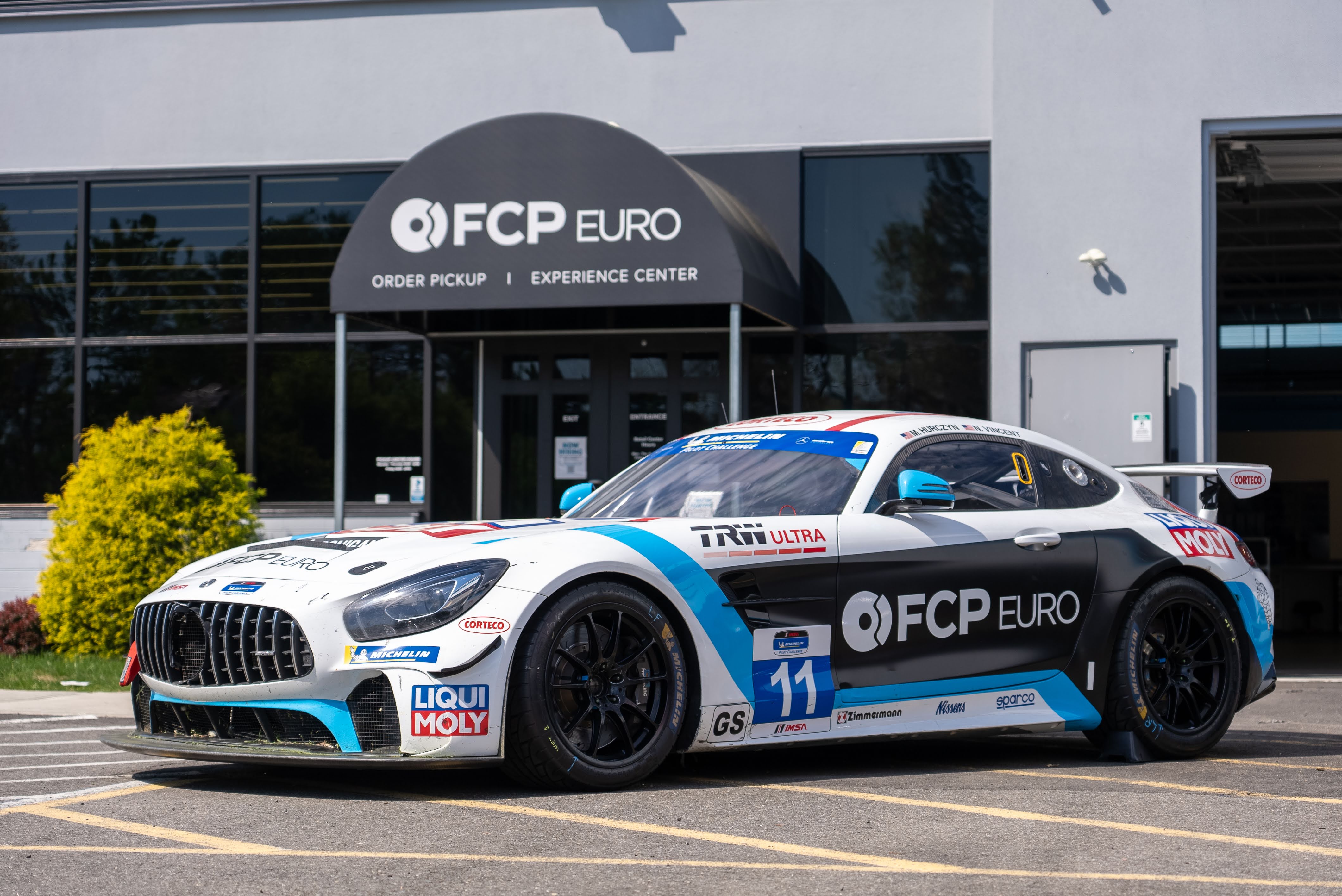
The original company from Stuttgart, and Porsche’s neighbor, Mercedes, is no stranger to an initialism or two. The companies vocabulary doesn’t contain too many confusing letter combinations, but you should know a handful of important ones.
ABC - Active Body Control
Active Body Control, or ABC, has been used for over twenty years. It’s a suspension system first developed on the C112 concept before reaching the American market in the 2000 model year CL215. It features coil springs with active dampers controlled by the ABC computer. The computer reads the road conditions through various sensors in the suspension and uses hydraulic pressure to firm up or soften the suspension at a particular corner. In sport, the ABC increases pressure on the outside suspension and eliminates all visible signs of body roll. The ABC softens everything in comfort, allowing for that classic Mercedes ride. Altogether, it’s very complex, with a host of sensors, pumps, servos, and pressurized lines notorious for being expensive to replace.
SBC - Sensotronic Brake Control
Mercedes has been the progenitor of many great technological advancements over the past few decades, but the Sensotronic Brake Control, or SBC, was not one of them. It eliminated the mechanical link for a brake-by-wire setup. As the driver applied the brakes, the SBC would use pressure sensors, a yaw rate sensor, and wheel speed sensors to determine the individual pressure each wheel would benefit from most. It would then distribute that based on the pressure required by each wheel. It was first introduced on the 2001 SL and saw two widespread recalls before being shelved for high-volume models in 2006. The SL continued to carry it beyond 2010. All models with the SBC carry a 25-year, unlimited mileage warranty for their components, as they’re known to fail so regularly.
ASD - Anti-Slip Differential
The Anti-Slip Differential was fitted to various W201 and W124 models in the late ‘80s. It is electrohydraulically controlled and locks up when one wheel speed sensor detects slip. The system exclusively uses ZH-M-type fluid.
ASR - Anti-Slip Regulation
ASR stands for Anti-Slip Regulation, the initialism for Mercedes’ comprehensive traction control system. The ASR uses a central computer that communicates with the electronic throttle body, wheel speed sensors, and the rear brakes. When slip is detected, the computer either shuts the throttle slightly to reduce engine power or brakes the slipping wheel. Both methods are used together in extreme situations.
EIS - Electronic Ignition Switch
Mercedes was an early adopter of non-traditional ignition keys. Ditching the cut blade for an electronic system certainly made their cars appear fancier, but a couple of decades later, we’ve seen the early adoption spell trouble for many. A big problem lies with the EIS or Electronic Ignition Switch. As the electronics age within the switch, they can begin to have trouble reading the specific coded frequency of the key, causing a handful of issues. A failing EIS can cause trouble inserting or removing the key from the ignition, a security system or ignition system fault on the dashboard, or no response when turning the key in the ignition. In extreme cases, the vehicle can be stranded, refusing to activate the ignition. The fix involves rebuilding or replacing the EIS.
ESL - Electronic Steering Lock
If the EIS ever had a partner in crime, it’s the ESL, or Electronic Steering Lock. The ESL should unlock the steering column once the EIS recognizes the key in its first position. However, the small electric motor that retracts the lock is known for burning out, leaving owners without steering. Unfortunately, the replacement process is very involved and can require steering column removal. Be sure to check all the options before determining how to repair the ESL in your specific case.
VGS - Variomatik Getriebesystem
Modern automatic transmissions are fairly complex, requiring a computer to control shift points and aggressiveness. Most manufacturers stick the computer in the cabin and connect it to the transmission via wiring, but Mercedes integrated its TCM, or transmission control module, into the transmission’s valve body. Together, the valve body and TCM make the VGS, which translates into "Variable Gear System."
While compact, efficient, and a good basis for tuning, the VGS has historically had TCM conductor plate issues in Mercedes’ 722.9 7G-Tronic transmission. Likely due to the intense heat within the transmission, the conductor plate breaks down over time and stops communicating with the rest of the vehicle. That breakdown generally sparks a speed-sensor-related code and can even throw the vehicle into limp mode. Luckily, it’s not a sudden failure but a gradual one. Look out for gear held too long, followed by a jerky or rough shift.
Replacing the conductor plate is the best way to remedy the failure, but ensure you know which transmission you have. VGS1, VGS2, and VGS3 are different from one another. The latter two allow for separate replacement of the conductor plate within the VGS, while VGS1 requires a complete replacement.
SAM - Signal Acquisition Module
Mercedes vehicles are full of luxurious, high-tech features that require extensive monitoring to ensure proper operation. So much so that Mercedes positioned several Signal Acquisition Modules around the vehicle to gather, condense, and send data through the CAN network. They work just fine and don’t typically fail unless water makes its way into the interior, frying whichever module it soaks and disabling the associated systems. Replacing the SAM and drying out the area are the associated fixes.
CDI - Common Rail Direct Injection
Before Mercedes diesel engines wore the BlueTEC badging, they were given the CDI moniker. It’s like VAG’s TDI in that it mostly just informs anyone looking at the vehicle that it’s equipped with a diesel engine. American-spec CDI models primarily featured the OM648 3.2L turbocharged inline-six engine, which can be quite the performance powerplant with just a bit of modification. They’re also the most reliable diesel engines you can find here, thanks to their lack of diesel particulate filters and exhaust fluid. European-spec CDI models feature far more variance in what powers them, with one even coming in proper AMG form.
ISM - Intelligent Servo Module
Automatic transmission shifters once had mechanical connections that utilized a rod from the shifter to the transmission to actuate gear changes. Mercedes’ first attempt to evolve beyond that was the ISM, or Intelligent Servo Module, introduced with the 722.9 transmission. Instead of a mechanical connection, the ISM records which gear the driver places the shifter into and relays that to the VGS. It’ll also shift the transmission into Park when the battery dies, ensuring the car cannot roll away.
Unfortunately, the ISMs can fail, leading to a no-start situation. That occurs when the ISM fails as it can’t read what gear the transmission is in, so it prevents engine start as a safety measure. This is typically accompanied by a warning message and a blank section where the gear is usually displayed. ISMs can be recalibrated, but a replacement is generally the quicker fix.
EGS/ETC - Electronic Gearshift System/Electronic Transmission Controller
Before Mercedes integrated the TCM into the VGS, there was the un-integrated EGS. As with all old electronics, circuits and connections break down, leading to uncharacteristic transmission behavior. That can be erratic shifts, slipping in gear, holding a gear too long, and other similar symptoms. Corresponding codes are typically present, so those should point you in the right direction.
W/S Button - Winter/Summer
There’s likely a button marked W/S somewhere around the automatic shifter in your Mercedes. That button determines which gear the transmission starts in. When in W for winter, it starts in second gear to aid traction on loose surfaces. Starting in S, the transmission uses first gear. There’s little to no difference in fuel mileage or performance, so utilize it as you see fit.
Audi/VW
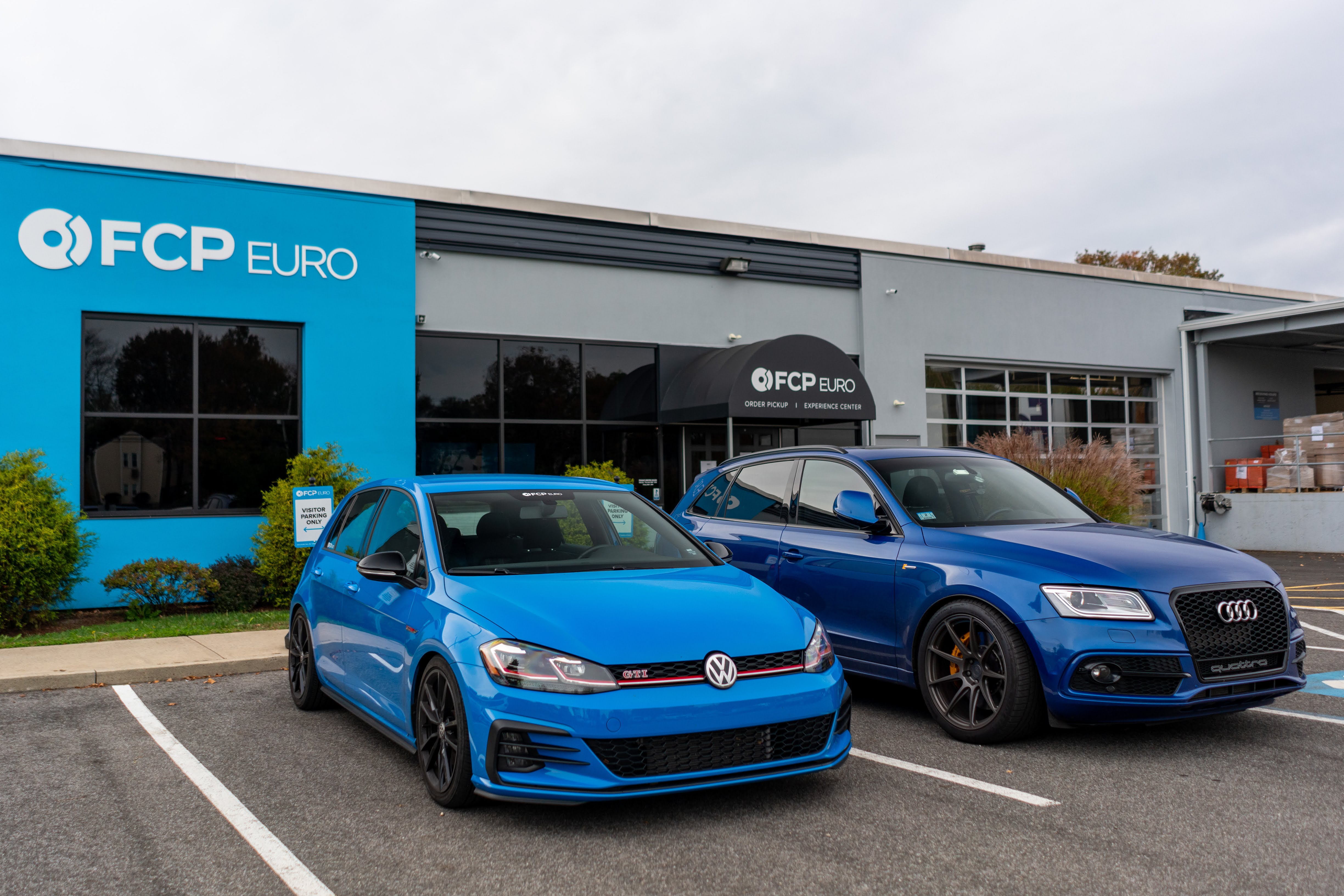
Audi and Volkswagen are so closely related that it made sense to include them together here. For the last quarter-century, many of these badges have adorned the engines and bodywork of Audi/VWs, covering their most family-oriented models to those designed to set fast lap times.
TFSI - Turbo Fuel Stratified Injection
Turbo Fuel Stratified Injection is the breakdown of TFSI. It refers to the technology equipped to the engine, whether the EA888 or EA113, that handles the fuel and air mixture in the combustion chamber. It’s meant to deliver a rich mixture near the spark plug that then gets leaner as it moves away, allowing for a leaner and more efficient fuel burn. TFSI is almost exclusively used on Audi models.
TSI - Turbo Stratified Injection
TSI stands for Turbo Stratified Injection. Does it sound similar to TFSI? That’s because it is. It’s essentially the same system as the TFSI but with a slightly shorter name. Both use direct fuel injection to produce a stratified charge in the combustion chamber for better fuel economy and lower emissions. The TSI badge can be found on the EA888 and EA113.
FSI - Fuel Stratified Injection
Fuel Stratified Injection is the first of VW/Audi’s stratified injection systems. The general injection setup remained the same during the update from FSI to TSI, with the main differences being the surrounding components. FSI engines use timing belts, whereas the TSI and TFSI engines use timing chains. They also use different engine management computers, have different compression ratios, and use different PCV systems.
TDI - Turbocharged Direct Injection
The TDI badge first appeared in the late ‘80s on an Audi. Since then, VW/Audi’s turbocharged diesel-powered models have worn the TDI nomenclature. Broken down, it stands for Turbo Direct Injection. The TDI badge was known for reliable and economical engines until the large emissions scandal hit VW just a few years ago.
DSG - Direkt-Schalt Getriebe
Direct-Shift Gearbox, or Direkt-Schalt Getriebe, is what Volkswagen/Audi calls their dual-clutch transmission. It debuted on the 2004 Audi TT 3.2 Quattro before entering almost every car in both companies. Dual-clutch transmissions have become the go-to in performance applications, making used GTIs an incredible performance value for money. If you’d like to know everything about the DSG, read it here!
VAQ - Vorderachsquersperre
Vorderachsquersperre, or Transversal Front Axle Locking, or the VAQ, is Volkswagen’s term for its electronic limited-slip differential. It’s a very clever system, unlike anything else in production today.
VAG-COM/VCDS
These terms get thrown around a lot on message boards and Facebook groups, but for a good reason. VAG-COM is the interface used to access the VCDS (VAG-COM Diagnostic Software) that interacts with the Volkswagen and Audi electronics. Engine mapping, code reading, data logging, and more are all possible with the software developed by Ross-Tech. Anyone who intends to own, service, or modify a VW/Audi should become familiar with this software.
Volvo

The Swedes are no stranger to acronyms and may just come up with some of the easiest to remember. Unlike most automakers, Volvo made actual acronyms out of their systems rather than initialisms, so they form actual words.
SIPS - Side Impact Protection System
SIPS is the acronym for Volvo’s Side Impact Protection System. Always looking for a way to be safer, Volvo began experimenting with new technology and energy dispersion techniques in the late 1980s. Then, they developed their SIPS and have fitted it to every car since, upgrading it along the way. Initial protection upgrades came from reinforced sills, pillars, and energy-absorbing honeycomb in the doors. That has since evolved into curtain and seat airbags designed to keep the structure away from the occupants.
BLIS - Blind Spot Information System
Another safety system from Volvo is the Blind Spot Information System (BLIS). The BLIS uses proximity sensors, similar to parking sensors, to warn the driver of any vehicles quickly approaching or sitting in their blind spot. The sensors send a signal to a central computer, which then illuminates a light on the mirror glass or housing to alert the driver of the other vehicle’s presence.
WHIPS - Whiplash Protection System
Launched in 1999 was the Whiplash Protection System, or WHIPS. Upon an impact from the rear, the seatback shifts into a different position, repositioning the body to reduce the chance of harm. Volvo themselves describe it like the seat is a glove that is catching a ball. The seatback partially relaxes and lays back, changing the angle of effect that the impact force has on one’s head and neck.
VIDA/DiCE - Vehicle Information and Diagnostics for After-sales / Diagnostic Communications Equipment
VIDA, or Volvo Information & Diagnostics Aftersales, is the diagnostic, programming, and repair software for all Volvos. It’s similar to VW’s VAG-COM/VCDS software and essentially provides the same function. If you plan to service or modify the Volvo in the future, you’ll want to have VIDA at your disposal. It’ll allow you to read and scan codes and reprogram modules, providing over twenty years of wiring schematics for many Volvo models.
SPA - Scalable Product Architecture
The SPA chassis is the current underpinning for Volvo’s larger-than-compact models. Those include the S60, V60, XC60, S90, V90, and XC90.
CMA - Compact Modular Architecture
The CMA platform covers Volvo’s and Polestar’s smaller models, like the XC40 and Polestar 2. Most of the vehicles built on this platform are for the Chinese market and are Geely and Lynk & Co models.
ISGM - Integrated Starter Generator Module
Today’s mild hybrid systems have condensed parts like the alternator and starter motor into one. That’s precisely what the ISGM is; it helps facilitate engine start/stop functions and regenerate electricity for the batteries. ISG issues are relatively common among SPA vehicles, though Volvo will likely cover some, if not all, of the work.
VEA/VEP - Volvo Engine Architecture / Volvo Engine Petrol
Since around 2017, nearly every model in Volvo’s lineup has used a version of their four-cylinder 2.0L engine. Some variants are twin-charged, while others sport only a turbocharger. Regardless of aspiration, they’re all part of the modular VEA engine family. VEP is the specific code for the gasoline-burning engines here in the ‘States. Elsewhere in the world, there are diesel variants, and they’re categorized under the VED engine code.
PEM - (Fuel) Pump Electronic Module
Fuel pumps are often controlled by a separate computer that raises or lowers pressure based on the driver's request from the engine. This computer is called the PEM or Pump Electronic Module in P2 Volvo models. Early models had their PEM placed outside of the vehicle, on the side of the gas tank. Unfortunately, the weather and elements quickly got to them, causing issues.
Failing PEMs were common enough that Volvo moved them inside the cabin on later vehicles. Signs of a failing module include hesitation, stuttering when trying to accelerate, and even stalling if bad enough. Replacing the PEM is the only fix if it’s gone bad, though, and you’ll want to relocate the replacement inside the cabin. It doesn’t require any major work, just some fiddling around in tight spaces with the wiring harness.
There are lots of initialisms and acronyms created by European manufacturers, and we likely didn't get them all. If there is a manufacturer-specific acronym left out of the list, please let us know in the comments! We'll add it to the continually growing list to help as many people as we can. As always, subscribe to our YouTube channel and follow along on the DIY Blog for more daily content!

